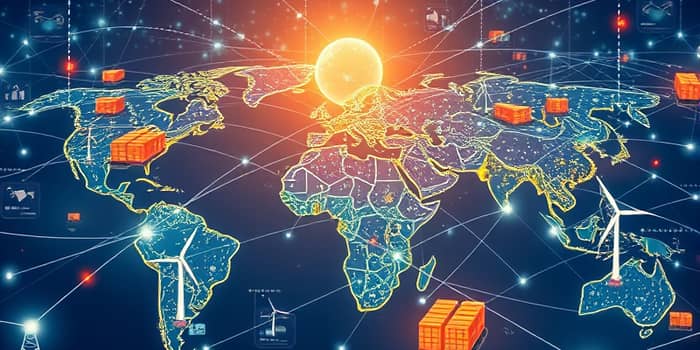
In an era marked by unexpected disruptions and rapid technological advances, supply chain management has leapt from a back-office function to a critical corporate strategy.
Organizations worldwide are recognizing that supply chain resilience, visibility, and sustainability can make or break their competitive position in 2025 and beyond.
Historically, supply chain teams focused on cost control and on-time delivery. Today, they sit at the C-suite table, shaping customer experience and corporate performance.
Major events—the COVID-19 pandemic, trade conflicts, extreme weather—have laid bare the vulnerabilities of lean, single-source models.
Nearly half of supply chain executives now acknowledge their businesses are exposed to disruption, fueling a shift toward ongoing geopolitical tensions and climate-proof strategies.
Corporate leaders are aligning supply chain ambitions with broader business goals, from sustainability to rapid innovation.
Half of all supply chain organizations plan significant investments in AI and advanced analytics in 2025.
Early adopters are reporting a 15% improvement in logistics costs, a 35% reduction in inventory levels, and a 65% boost in service performance.
By harnessing real-time data and automation, companies can forecast demand with unprecedented accuracy and respond to disruptions in seconds rather than days.
Despite heavy spending on technology, just 6% of companies claim full supply chain visibility. This gap leaves many blind to delays, quality issues, and compliance risks.
Technology solutions—blockchain for traceability, IoT sensors for real-time tracking, digital twins for scenario planning—are vital tools for closing this visibility gap.
Supplier diversification, dual sourcing, and dynamic safety stocks bolster agility, while strategic partnerships foster innovation and trust.
Leading organizations now measure success not just by cost savings but by environmental impact and social responsibility.
Circular supply chain initiatives—from product take-back programs to closed-loop recycling—are transforming waste into value and differentiating brands in crowded markets.
By embedding circular supply chain initiatives into core processes, businesses reduce their carbon footprint and build sustainable competitive advantage.
Schneider Electric has topped Gartner’s 2025 Global Supply Chain Top 25 by integrating AI, automation, and sustainability into a unified transformation program.
NVIDIA, ranked second, credits its rise to an agile, AI-enabled supply chain that responds to market shifts in real time, ensuring uninterrupted production of critical semiconductor technologies.
These success stories illustrate how a transformative AI journey can deliver both operational excellence and environmental stewardship.
Implementing new technologies and strategies demands more than capital. It requires upskilling teams, aligning cultures, and fostering collaboration across departments.
Leaders must communicate a clear vision, invest in ongoing training, and reward behaviors that support innovation and agility.
Remember, cultural alignment is critical to converting technology potential into measurable business outcomes.
As we move forward, supply chain leaders will deepen AI integration, expand circular models, and embrace digital twins and blockchain for predictive agility.
Predictive analytics will transform how we manage risk, optimize inventory, and deliver exceptional customer experiences.
By treating supply chain optimization as a board-level priority, organizations can unlock resilience, drive sustainable growth, and secure a competitive edge in an uncertain world.
Now is the time to elevate your supply chain strategy and lead your business into a future defined by innovation, agility, and purpose.
References













